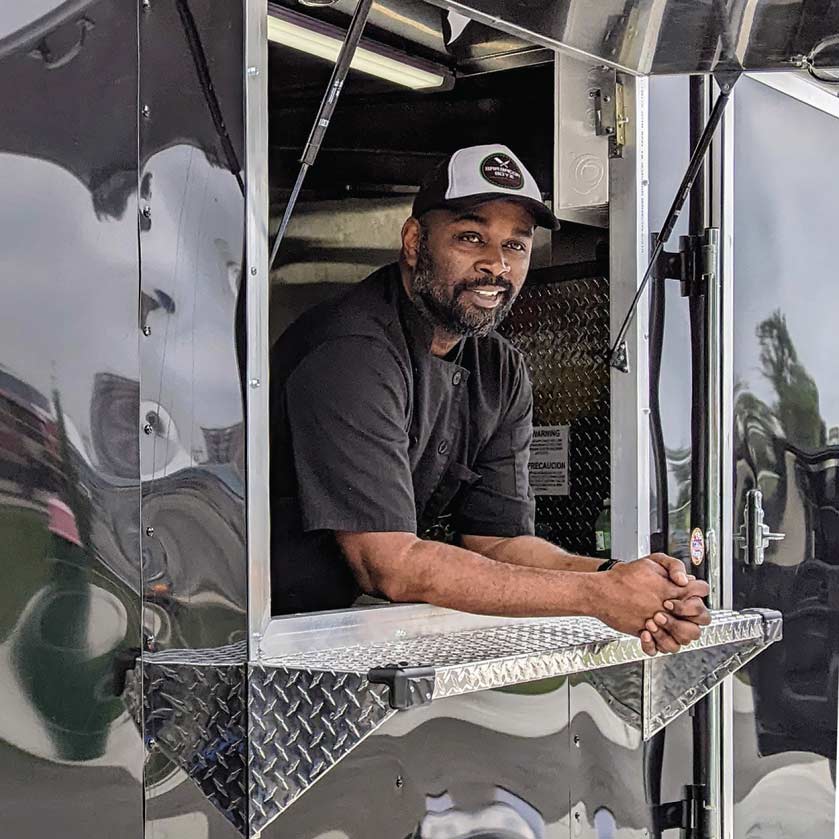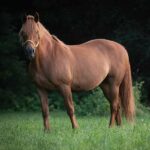
From his small food wagon in Quinte West, pitmaster Jamie Beeston plays with fire, creating authentic tastes of the Caribbean – with a Canadian spin.
Watershed Magazine: Chef Beeston, can you tell us about barbacoa, a way of slow-cooking meat?
Jamie Beeston: Barbacoa started with the Aztec centuries ago. They would dig a deep hole in the earth, build a fire of very hot coals, fill the hole with agave leaves and place small game, birds or fish on the leaves. They covered the top of the pit tightly with more agave leaves and let the meat cook – or steam – all day or overnight. This “earth-oven” cooking was widespread throughout the Caribbean as well. The Arawak/Taino – Jamaican natives – used green, fire-resistant, flexible branches and banana leaves. They lined the hole with the branches, wrapped the meat or fish in the leaves and cooked them with local spices such as cinnamon, nutmeg, chilies and allspice. The spices weren’t only used to enhance flavour, they also preserved foods and kept them from spoiling in the tropical heat.
Tell us about your “Caribbean-Mexican-Canadian fusion.”
It’s not feasible to cook our meats underground wrapped in banana leaves, so we take components from this cooking style and make it our own. We marinate and season our meat with the same traditional flavours; we use wrapping techniques for smoking; and we roast the meat low and slow for almost a whole day. Fusion helps give them some familiarity, as in poutine or sliders. As a chef, I try to bridge the gap for people, to open their minds and palates to try something new. I love it when someone excitedly tells me they’ve never tried jerk chicken before – the look on their face when they’re blown away by the flavour.
Where did you learn to cook?
I learned to cook from my mom, mostly just by watching her in the kitchen. I started by making rice and burned my first batch! At 15 I began working in kitchens but it wasn’t until I was 25 that I decided I really wanted to take my skills to the next level, so I went to Liaison College for Culinary. But my family is full of great cooks! Food was always a focal point for our family gatherings.
Who are the “boyz” in Barbacoa Boyz?
We came up with the name Barbacoa Boyz before we had kids – it had a nice ring to it. The “boyz” represent my friends, my brothers, my cousins and now my own boys. But it also includes the important women in my life. I couldn’t have gotten here without them. My wife has been my biggest supporter. She’s truly amazing; there is nothing she won’t help me with.
What brought you to Quinte West in 2021?
My wife and I always dreamed of living in a quieter town closer to nature, water and farmland. We loved the idea of a vegetable garden, maybe some animals and peace of mind for our kids to safely play outdoors. Thanks to the pandemic, my wife’s job went remote, and we took that opportunity to make the big move.
Your Instagram feed is mouthwatering; OMG, the seafood!
I’ve always loved seafood. Jamaicans eat a lot of seafood, so it’s something I’ve grown up with. When we travelled to Jamaica’s Hellshire Beach I saw fishermen bring in huge crabs, lobsters, oysters and shrimp. Eating fish fresh out of the sea with some homemade hot sauce was out of this world. I always try to emulate that when I’m making seafood.
You do all this from a small food “wagon,” but when you came to Quinte West, you were thinking bricks-and-mortar restaurant; is that still the dream?
We are still dreaming about a bricks-and-mortar restaurant, but only when we’re ready for it. We’re looking forward to training the kids as they get older so we can have a true family business.
So, are folks loving your food?
Yes, people have been giving us amazing feedback and we already have some regulars who follow us to whatever pop-up we’re at. It brings us a sense of pride to see people have our food a few times, then bring their family and friends from out-of-town to try it! We can’t believe how many glowing, five-star Google reviews we’ve gotten.
Story by:
Signe Langford




